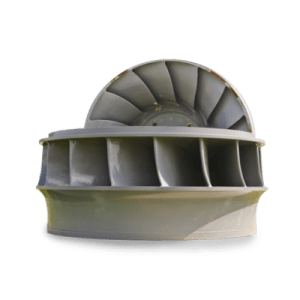Watch a turbine spin
Turn a pop bottle, skewers and corks into a model turbine to see how water powers B.C.
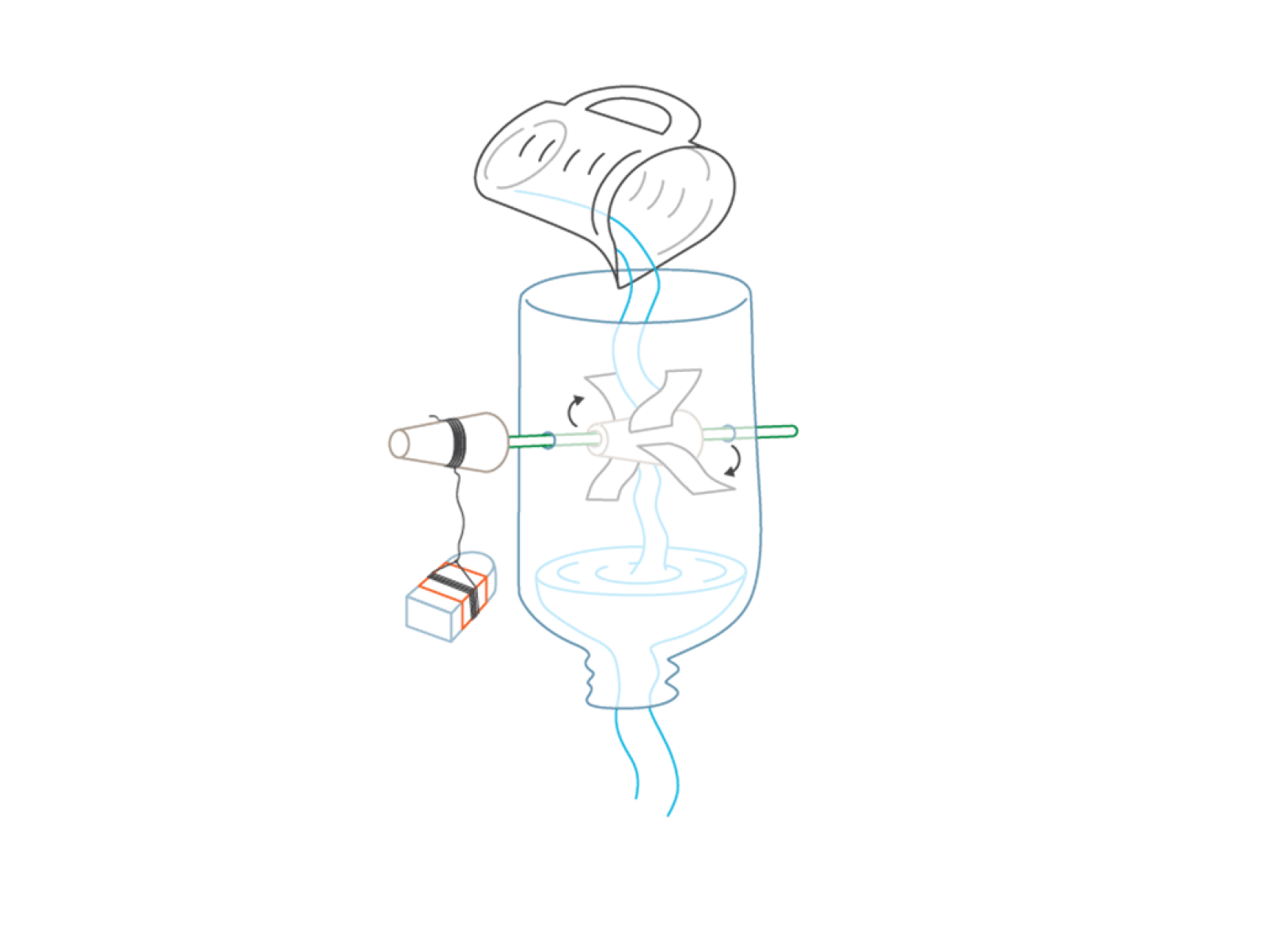
Overview
Hydroelectric dams use water to power the province of British Columbia. Let’s get hands on and make a model turbine to see the power of falling water in action.
Instructions
What you'll need
- Each group will need:
- 1 2L pop bottle
- 2 bamboo skewers
- 1 cork with 4 slits pre-cut to fit the plastic strips
- 1 cork with no slits
- Scissors
- A nail
- Eraser or small toy
- 1 piece of string (approx. 50cm long)
- “Path of electricity” image
- “Inside a dam” image
- Make a sample water turbine to show the class
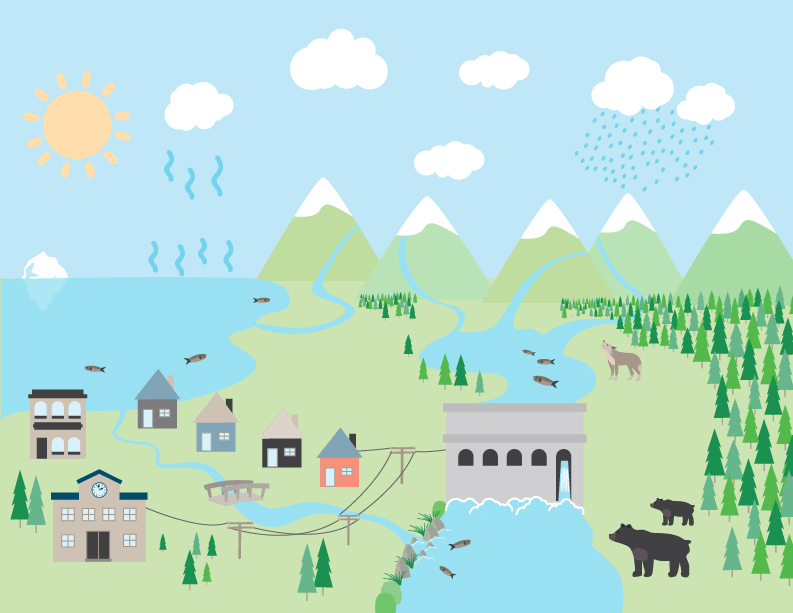
- Explain that most of our electricity comes from hydroelectric dams. Show the “Path of electricity” image and ask students:
- Where do you think electricity starts its journey?
- How does a hydroelectric dam make electricity?
- Show everyone your sample water turbine and explain that the power of falling water spins a big wheel with blades called a turbine, which is used to generate electricity inside a dam.
- Have each small group gather the materials to a build a turbine of their own.
Making the pop bottle turbines
- Carefully cut out the bottom part of the bottle. Then cut 4 small strips of plastic out of the bottom part. Each strips should be about 5 cm long and 2 cm wide.
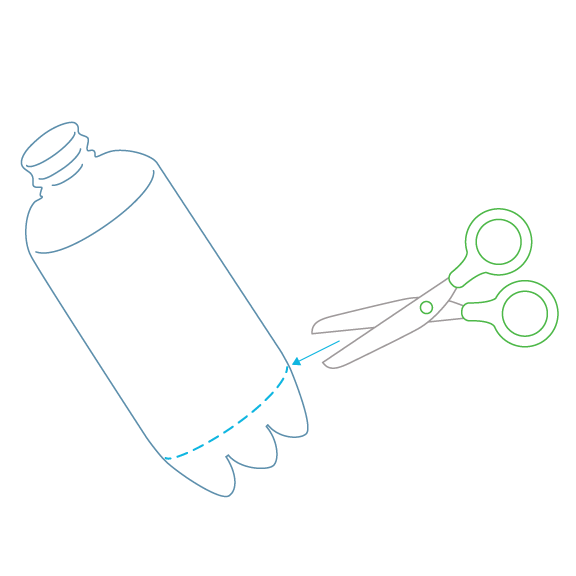
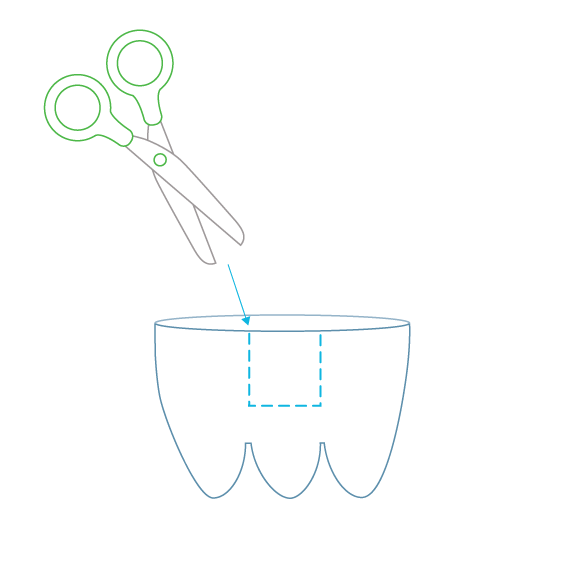
- Put the 4 strips of plastic from the bottom of the pop bottle into the pre-cut slits in the cork.
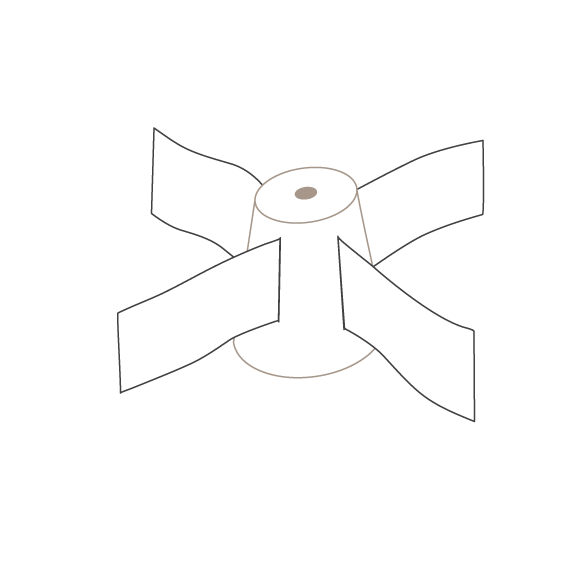
- Use a skewer or pencil to make two holes on opposite sides of the pop bottle, about half-way up the bottle.
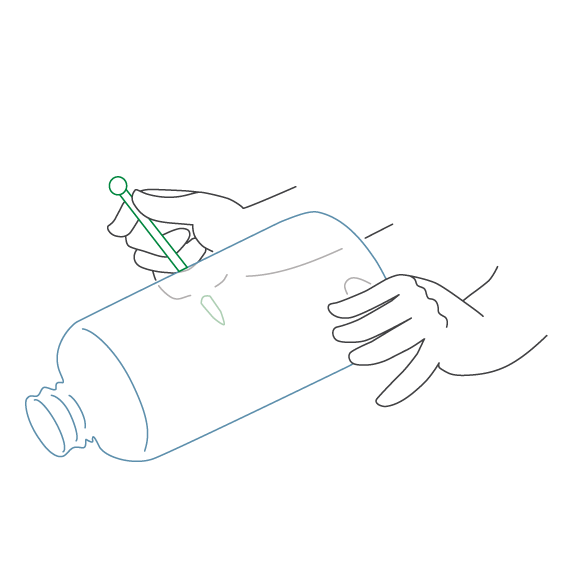
- Put one skewer through the hole and into the cork with the plastic strips. Put the second skewer through the opposite hole and into the other side of the cork.
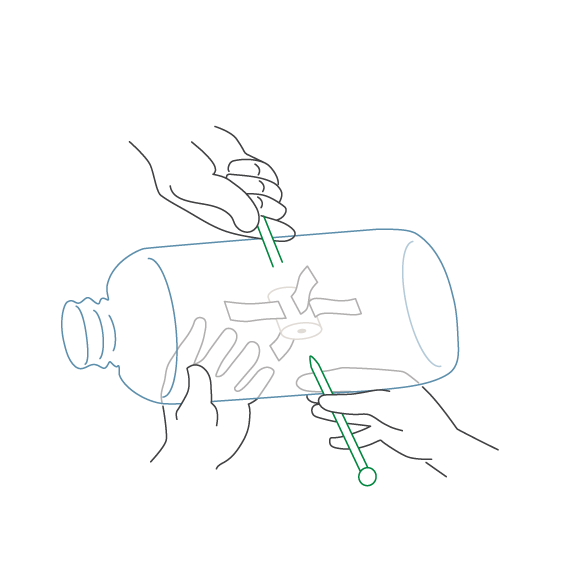
- Stick the second cork on one of the skewers outside the bottle. Attach a piece of string to the cork and tie an object, such as an eraser or small plastic toy, to the other end.
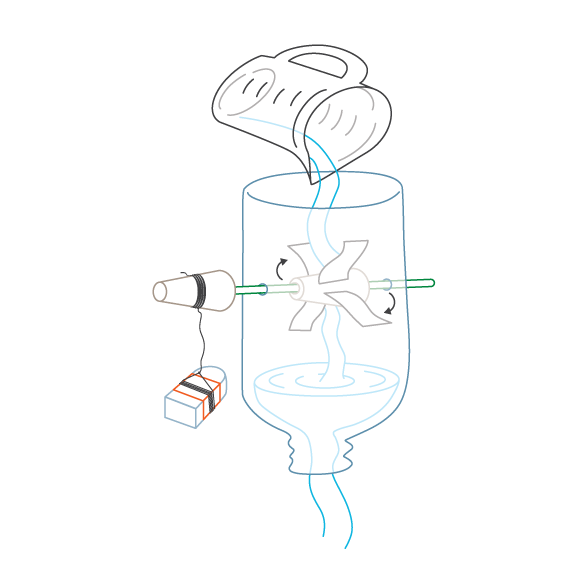
- Take the turbines outside (or over the sink) to pour water through them and watch what happens.
- Review key elements of the pop bottle turbines.
- Water from the reservoir turns the turbines.
- When the turbines spin, it makes something happen. In our models, it lifts an object. In real life, it spins a generator which makes electricity.
- Show students the “Inside a dam” image and explain the parts of the dam.
- Discuss the importance of water and the water cycle to generating electricity in B.C
Modify or extend this activity
- If your students scissors are not sharp enough to cut through the cork or bottle, you can help them out by using a sharper tool, like a box cutter.
- Have students build the model turbines at home and bring them to school to discuss how a real turbine works in a hydroelectric dam.
- Watch a fun video and lead a quick activity about the “Power of falling water”.
Curriculum Fit
Grade 2 Science
Content
- Water sources including local watersheds
- Water cycle
Curricular competencies
Questioning and predicting
- Demonstrate curiosity and a sense of wonder about the world
- Ask questions about familiar objects and events
- Make simple predictions about familiar objects and events
Planning and conducting
- Safely manipulate materials to test ideas and predictions
Applying and innovating
- Transfer and apply learning to new situations
Communicating
- Communicate observations and ideas using oral or written language, drawing or role-play
Assessments
- Assess student participation in class discussions.
- Assess student ability to transfer and apply their understanding of the water wheel model to how electricity is generated in a hydroelectric dam.
Teaching Notes
Hydroelectricity
In British Columbia, most electricity is made inside hydroelectric dams using water. Inside a dam, falling water is used to turn a large wheel called a turbine. The turbine turns a giant magnet inside huge coils of wire in a generator. This is what produces the electricity.
The electricity has to be transported to where it’s useful (like to your home to power a computer). The electricity travels for many kilometres over high-voltage wires called transmission lines. These transmission lines are held in the sky away from the ground by tall wood or metal transmission towers.
When the electricity gets near a town or city, it goes into a substation. The substation reduces the voltage, divides the electricity and sends it in different paths over wires called distribution lines. These distribution lines take the electricity to your home and can be either above ground or underground.
Often you will see grey cylinders called transformers on power poles. These reduce the voltage on the distribution lines to an amount that can be safely used in buildings. You may also see metal boxes with warning signs where newer houses are built. These boxes are called pad-mounted transformers. They do the same things as the transformers on the poles, but are for underground distribution lines.
As the electricity enters your house or school, it passes through a meter. The meter measures the amount of electricity your household uses. The electricity flows through the meter, through wires in your house and ends in electrical outlets in the walls. To use the electricity, you plug the appliance or device into the outlet.





